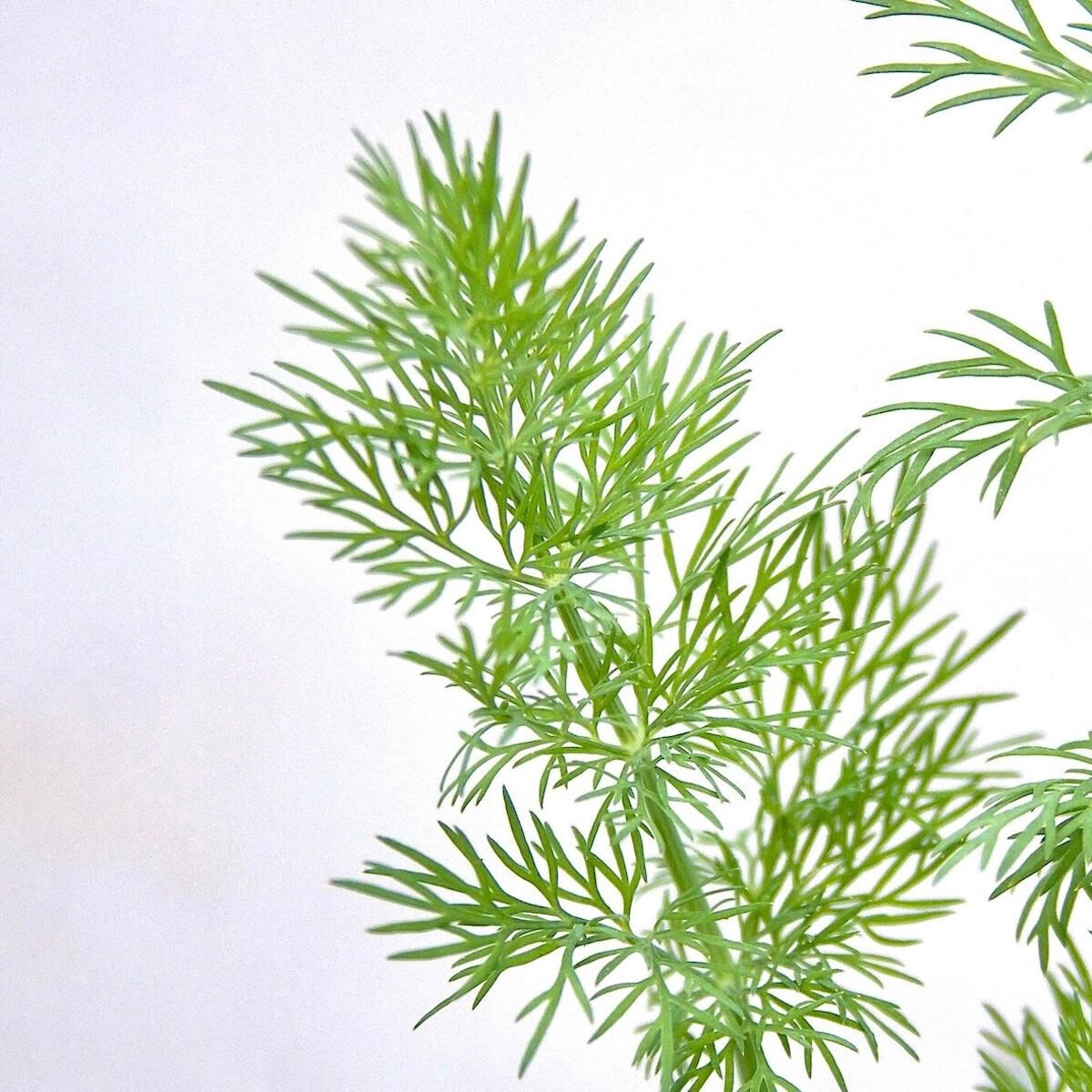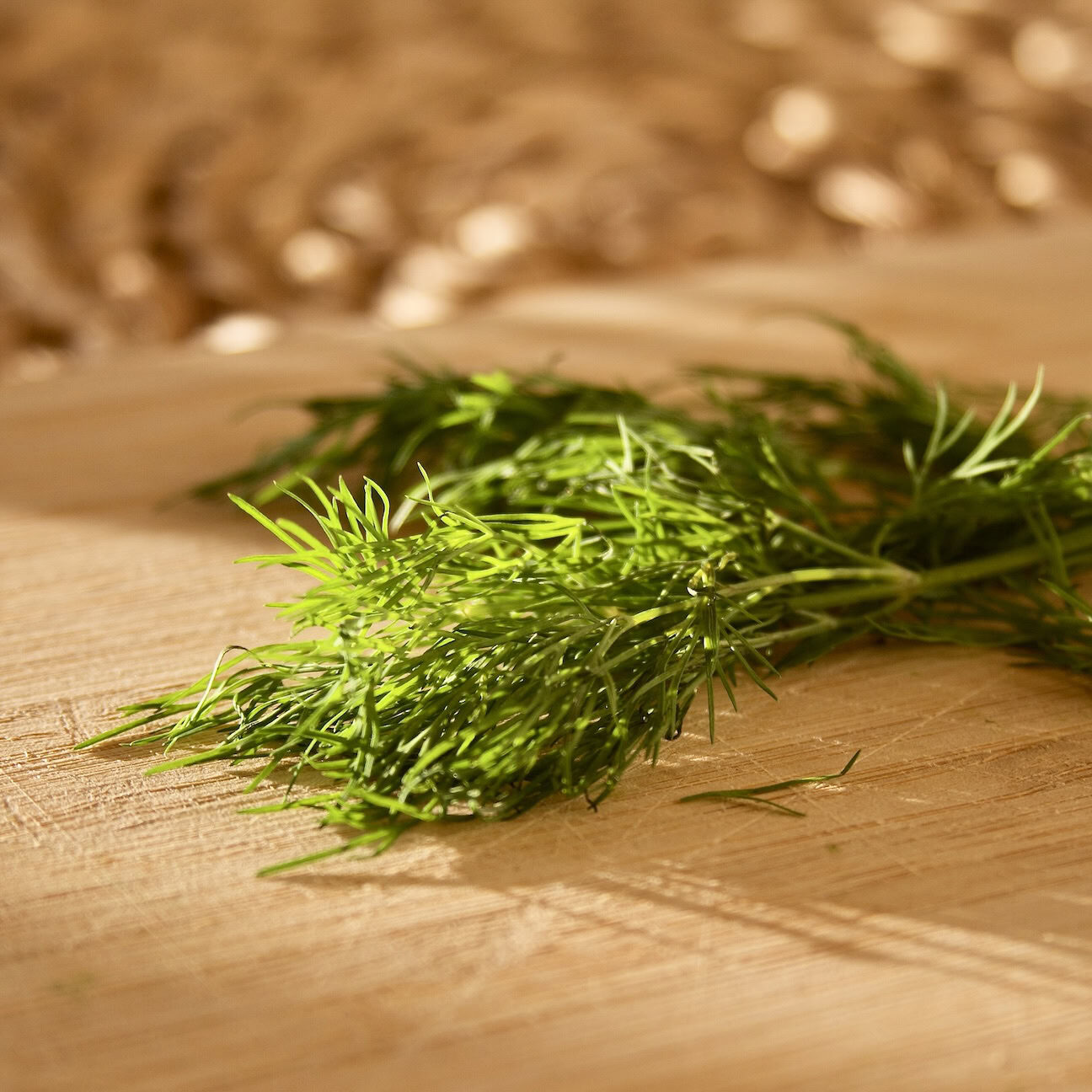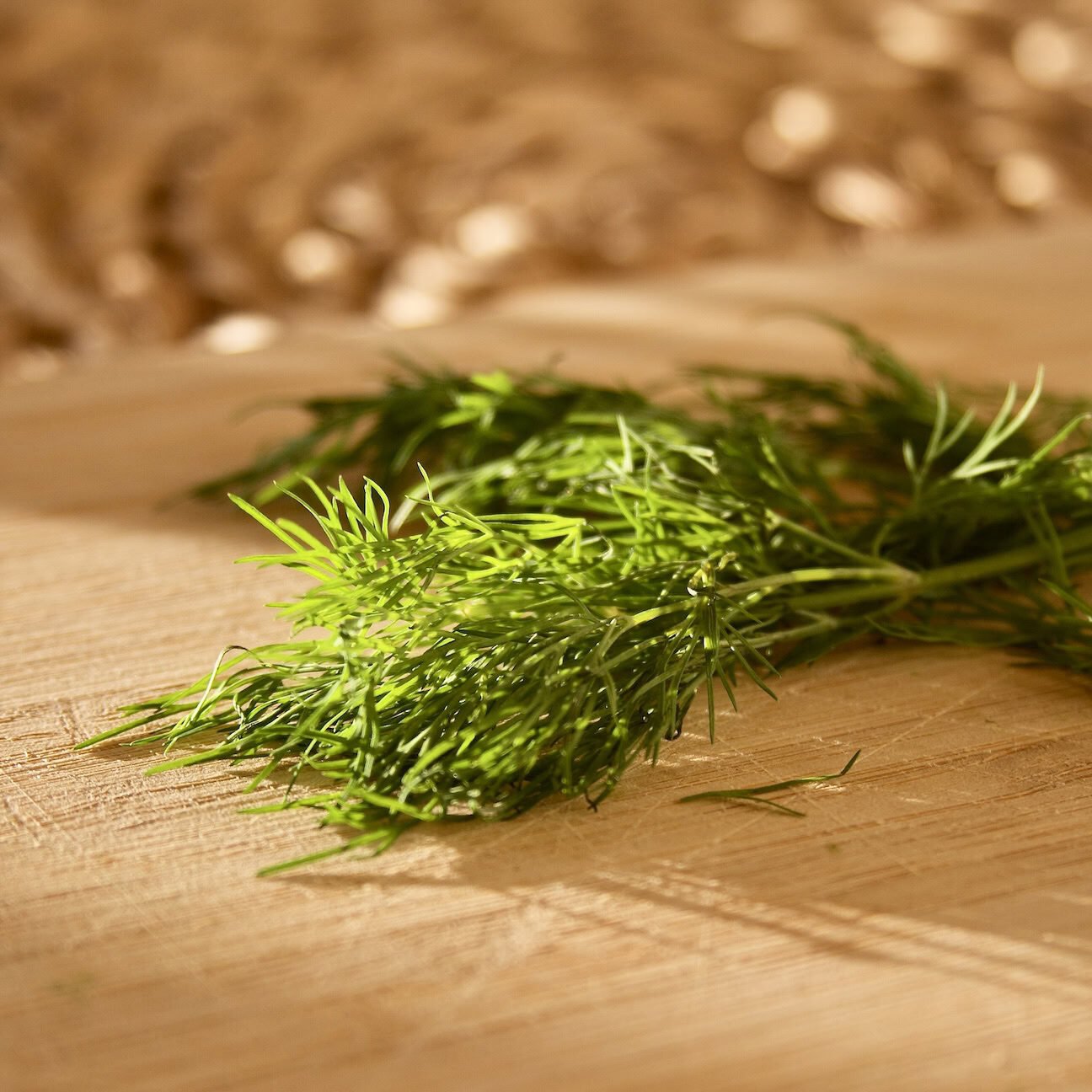Dill

REGION OF ORIGIN
Dill originated in the Eastern Mediterranean and Middle East, including countries like Greece, Turkey, Egypt, and Iran.
PART & COLOR
Dill herb, or dill weed, or just dill, refers to the soft, feathery, fern-like leaves of the plant (often called fronds). They are bright green with a slight bluish hue. The dill plant’s tiny fruits, often called dill seeds, are a popular spice as is its pollen, which includes the tiny dried blossoms.
HARVEST
Both dill species are fast-growing annual herbs that thrive in full sun. Typically sown in the spring after the last frost, dill fronds can be harvested throughout the growing season. The leaves are ready for harvest when the plant reaches a height of 6-8 inches, usually within 40-60 days of planting, as soon as the plant has 4-5 leaves. To encourage bushier growth and a continuous supply of leaves, the outer leaves are harvested first, cutting them close to the base. While dill can be harvested throughout the growing season, the leaves are typically at their peak flavor and aroma in the early summer.

FLAVOR & AROMA PROFILE
Dill's bright, fresh aroma instantly transports you to a lush herb garden. Its delicate top notes of celery, citrus, and a little anise are complemented by a robust herbal depth, creating a harmonious balance that seems to evoke the essence of nature itself. It's a very calming fragrance. "Dill" is derived from the Nordic dilla, which means “to lull," so tranquility is in its DNA. Its taste is fresh and herbaceous, with a light sweetness followed by a lighter bitterness. That anise-like aromatic note adds a touch of warmth and spice on the tongue as well, while a citrusy element makes it refreshing.
Dill's spiciness can be intensified with a later harvest time—the longer you wait until it starts to flower, the spicier it gets. You can also adjust the intensity by using different plant parts: the leaves offer a brighter, more herbaceous flavor, while the seeds are warmer and more pungent, with a stronger anise note. The pollen is even more concentrated, offering the strongest dill essence.
CULINARY USES
The use of fresh dill “weed” extends far beyond its traditional role as a garnish. It is a staple in Scandinavian and Eastern European cooking, where it's used to flavor fish, potato salads, and pickled vegetables. Its bright, herbaceous notes complement the creamy richness of dairy products like yogurt and sour cream, making it an essential ingredient in delicious dips like tzatziki and gravlax. Indian dill is often used in lentil curries, potato dishes like aloo sowa, and rice plates like pulao and khichdi.
Fresh dill can also brighten salads, soups, and eggs, its delicate flavors pairing nicely with cucumbers, tomatoes, and other summer vegetables. Dill fronds are commonly used to infuse oils and vinegars in order to make flavorful dressings and marinades. When cooking with dill, the timing of when you deploy it affects the outcome. For a more pronounced flavor, add it near the end of the cooking process. For a milder taste, incorporate it earlier.



